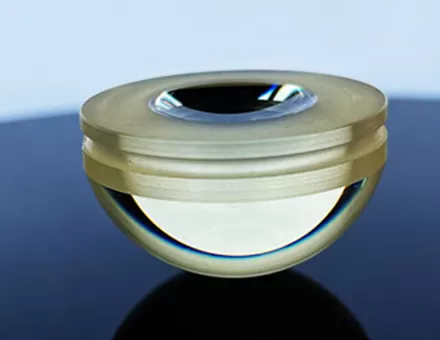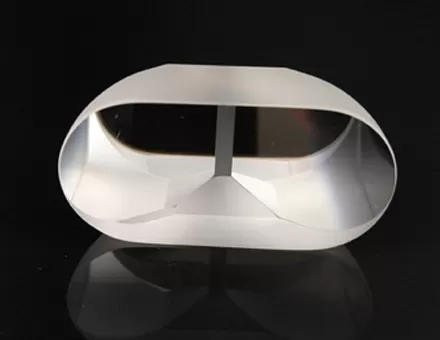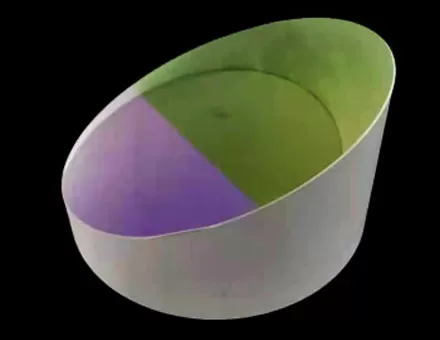The working principle of a dispersion prism is based on the phenomenon of light dispersion, which means that when light of different frequencies passes through the same medium, the refractive index of the medium is related to the frequency of the light, so the propagation direction will have different degrees of deflection. When polychromatic light (containing light of multiple frequencies) enters a dispersion prism, this deflection causes light of different frequencies to be separated, forming different monochromatic light.
Specifically, when white light (including light of various frequencies) passes through a prism, due to the prism's different refractive indices for light of different frequencies, the various colors of white light will be refracted at different angles. For example, purple light has the highest frequency, so it has the highest degree of deflection in a prism, while red light has the lowest frequency and the lowest degree of deflection. In this way, the prism successfully decomposes white light into different colors such as red, orange, yellow, green, blue, indigo, and purple, which is the phenomenon of light dispersion.
Pellin-Broca prism
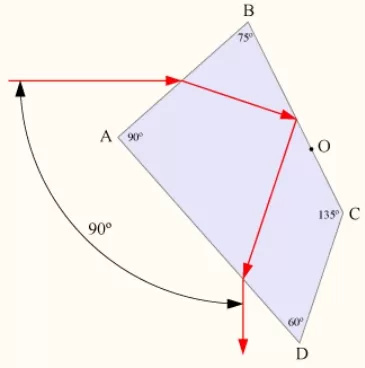
The Pellin Broca prism is named after the inventor, French instrument manufacturer Dr. Pellin, and physical optics professor Andr é Broca.
The prism is shaped into a square with four planes, with correct angles on each side in order of 90 °, 75 °, 135 °, and 60 °. The light is incident from the AB plane, fully reflected from the BC plane, and then leaves the prism from the AD plane. For light of a specific wavelength, after entering, it can be refracted and correctly deflected by 90 ° when emitted.
Abbe prism
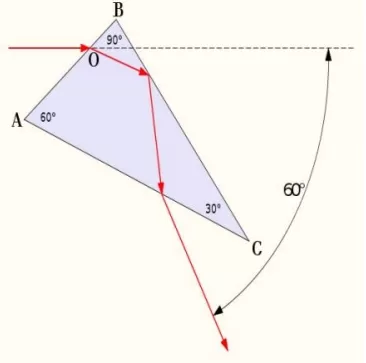
Abbe prism is an optical element named after the inventor German physicist Ernst Abbe. It is a type of dispersion prism similar to the Bering Broca prism, with a fixed bias angle.
A prism is a right angled glass mirror block with three angles of 30 ° -60 ° -90 °. When in use, the light beam enters from the AB plane, refracts and reflects completely from the BC plane to the AC plane, and then refracts and shoots out from the AC plane. This prism is designed to deflect light of a specific wavelength by 60 ° when leaving the prism.
Amisi prism
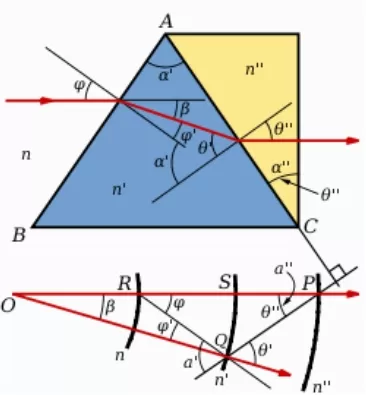
The Amici prism is named after the inventor Italian astronomer Giovanni Amici and is an optical prism group with dispersion function, commonly used in spectrometers.
The Amisi prism is composed of two triangular prisms, the first prism is usually made of glass with medium dispersion ability, and the second prism is made of glass with higher dispersion ability (compared to the first prism). When light enters the first prism, it is first refracted and then enters the interface between the two prisms. Due to the different refractive indices of the two glass materials, refraction occurs again at this interface (the two refractions are opposite to the incident light angle). Finally, the refracted light is emitted in a direction almost perpendicular to the surface of the second prism. The angle and material of the prism are selected so that one wavelength (color) of light, usually the central wavelength, leaves the prism parallel to the incident beam. The angle of deviation of other wavelengths is related to the dispersion ability of the material.
The spectrum of the light source can be displayed by directly observing it with the naked eye through a prism group.


















 EN
EN




